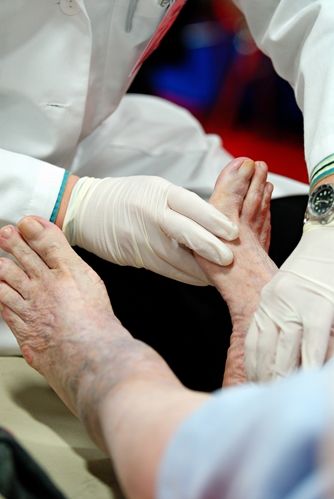2 specialized orthopedic devices designed for patients with foot drop
Foot drop, characterized as an abnormal steppage gait due to muscle weakness or paralysis, is commonly treated with an orthopedic foot brace. Although many variants exist, these braces, or ankle foot orthoses, come in two basic styles: rigid and flexible. Both rigid and flexible AFOs have their own strengths and weaknesses, so it is important for patients to choose an appropriate model for their individual needs, which should be determined by a doctor based on the patient's specific orthopedic documentation.
Rigid orthoses
Rigid AFOs are custom-made by an orthopedic specialist on a case-by-case basis. In order to be fitted for an orthosis, the individual with foot drop typically is measured, and, in some cases, orthopedic specialists takes a mold of the leg, ankle and foot so they can more accurately fabricate the brace. Due to their durability and immobilizing properties, rigid AFOs are usually given to patients whose foot or ankle must be reinforced or protected. However, their rigidity can be a hindrance to some patients since it can make walking awkward and difficult.
Flexible orthoses
Flexible ankle foot orthoses are better suited for individuals who are not at risk of further damaging their foot or ankle, and who desire more mobility than a rigid device would afford them. Unlike their rigid counterparts, flexible AFOs are not custom-made for each person. Instead, they can be ordered off the Internet or by mail. If an orthosis is ordered online or by mail, it is advisable to save the receipt and purchase information to later assist with orthopedic coding if it proves necessary. Generally, the size of the brace corresponds to an individual's shoe size. These braces allow patients to walk much more naturally, and of who want to operate motor vehicles.
Not every case of foot drop is the same, so it is important that individuals who have the condition choose the appropriate AFO for their needs.



